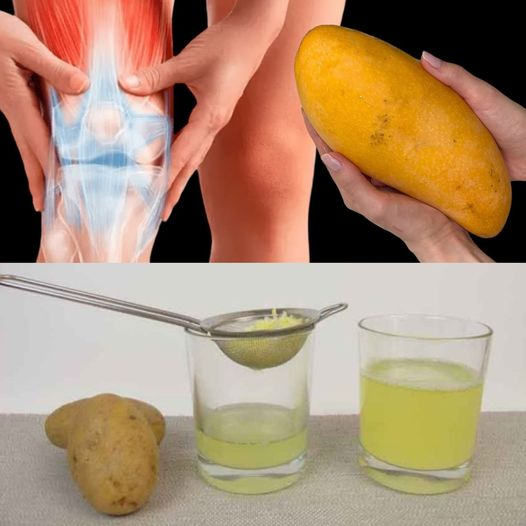
We have all had to deal with leaky pens and what they do to leather—put a broken ballpoint pen or Sharpie in a pants pocket or leather bag by mistake, and suddenly, a blue or black blotch appears on your leather jacket or couch. These pen marks last forever if untreated, and if you don’t know how to remove pen ink from leather, cleaning these stains can be frustrating and may result in a bigger mess.
You don’t want to cover up or throw away an expensive and good-looking piece of furniture or purse because of an ink stain, but what cleaning options do you have?
Fortunately, there are some tried-and-true methods for getting ink out of leather – some methods require specialized ink removers, and some of them need nothing more than household cleaning products. In this article, we’ve gathered some of the most effective ways to remove pen ink from leather
How to Get Ink Out of Leather
Evaluate your stain and determine the best way to treat it. How to remove an old oil stain from a leather bag is a little different than dealing with ink.
Use Hair Spray on the Stain
The magic ingredient in hair spray that works on ink stains is isopropyl alcohol, otherwise known as plain old rubbing alcohol. Over time, companies have reduced or phased out isopropyl alcohol levels in hair spray completely, so this method is not as effective as it once was.
However, if you don’t have rubbing alcohol in the home, you can use a hair spray with a relatively high alcohol content to clean your leather. Before you try to clean pen marks with hair spray, you should test the cleaning method on an inconspicuous place on the leather.
Spray the pen marks, allow it to sit for several minutes, and then rinse the spot with cool water. Afterward, dab – don’t rub – the place with a dry cloth or paper towel.
Apply Alcohol to the Stain
Alcohol can be useful for how to remove Sharpie or other ink from leather but it can damage leather if you apply it carelessly. Isopropyl (rubbing) alcohol is the most effective. Denatured alcohol or nail polish remover may work better, but you run a higher risk of damaging the leather.
Make sure to test the alcohol in a hidden spot before using it on the stain to ensure that you will not harm the fabric. Apply the alcohol with a cotton swab or cotton ball and rub lightly as you apply.
The ink should soak into the cotton swab. Do not allow the alcohol to sit too long after application – quickly dry the area with a hairdryer, if possible, or it might eat away at the leather.
For Non-White Leather, Try this Homemade Leather Cleaner
This home remedy is effective and safe to use on non-white leather, but always make sure to test the mix on a small area first.
Lemon Juice-Based DIY Leather Cleaner Recipe
1 part lemon juice
1 part cream of tartar
Mix the two ingredients into a paste. Then, apply the mixture to the ink spot using a microfiber cloth. Work the paste into the stain, and let it sit for a few hours if the stain remains.
Once you have cleaned the area with a damp cloth, apply a commercial or DIY leather conditioner to ensure that the leather is maintained, and you are working on a piece of leather furniture, be sure to always follow the tips for cleaning a leather couch for best results.
Homemade Cleaner for White Leather
White leather is more sensitive to caustic ingredients, so if you have an ink spot on white leather, use this cleaner. Make sure to test the cleaner in an inconspicuous area first.
DIY White Leather Cleaner Recipe
1/4 cup vinegar
1/2 cup olive oil
Mix the ingredients in a spray bottle. Spray the mixture on the affected area, and let it sit for five minutes or so before wiping it off.
As with non-white leather, you should apply a professional or DIY leather conditioner to properly maintain the leather, and if you are cleaning leather furniture, make sure to follow the tips for cleaning a leather couch.
Use a Commercial Leather Cleaning Product
If your home remedies don’t work for removing acrylic paint from leather, commercial cleaners might be the way to go. They can cost a bit, but they are guaranteed to not damage your leather if used correctly.
As with home cleaning solutions, however, you should always test the product on a small area before trying them on the stain.
Commercial Cleaning Product Advantages
They are carefully tested and should be safe for cleaning leather.
They may work better on stubborn stains.
They usually require no mixing or measuring.
Melamine foam, also known as a Magic Eraser, is a significant first step toward stain removal. If the Magic Eraser doesn’t do the trick, try to remove pen from leather with liquid cleaners.
There are many excellent commercial leather products available, and many of them are valid on ink stains. Choose the best one for your needs, and you should always follow the included cleaning instructions.
Take It to a Dry Cleaner
If all else has failed you and you’re willing to pay to get your leather
purse or sofa back to pristine condition, you might consider a trip to the dry cleaners. Dry cleaners have a lot more tools and tricks to get Sharpie off of leather, and they have access to more powerful cleaning chemicals.
If you choose to take your leather to a dry cleaner, you should always do research and choose a reputable business. And, be sure to inform the cleaning staff of any special care instructions before entrusting them with your leather.
After you’ve cleaned out the stain, consider applying a leather protector to avoid future stains. It doesn’t require ballpoint ink to damage leather, after all—a single drop of water on unprotected leather can ruin it.
If you’re the victim of a broken ink pen and have been unfortunate enough to find yourself with a big black or blue ink stain spreading across your favorite leather item, we hope that you found this article on how to get pen ink out of leather to be helpful.
Whether you use a home cleaning solution or a professional, patience and persistence can get your leather goods clean, ink-free, and beautiful again.
Thanks very much for reading our tips on how to remove pen ink from leather. Please share these ink stain removal tips with your friends on Facebook and
A beach in the 70’s. Not one over weight body. My, how the food industry destroyed us.

The Transformation of Our Bodies and Diets
In the 1970s, a visit to the beach was a showcase of lean, active bodies. People of all ages enjoyed the sun, surf, and sand with a level of fitness that seemed effortless. Fast forward to today, and the scene has drastically changed. The prevalence of overweight and obese individuals has skyrocketed, painting a stark contrast to the svelte figures of the past. This shift prompts us to examine the role of the food industry in this dramatic transformation.

The 1970s: A Different Era of Eating
During the 70s, the typical diet was markedly different from what we see today. Meals were often home-cooked, with fresh ingredients forming the backbone of family dinners. Processed foods were available but not ubiquitous. Fast food chains were fewer, and eating out was considered a treat rather than a regular occurrence. Portion sizes were smaller, and sugary snacks were less prevalent in households.
Physical activity also played a significant role in the lives of people in the 70s. Without the convenience of digital entertainment, children and adults alike spent more time outdoors, engaging in physical activities. Walking, cycling, and participating in sports were common pastimes.
The Rise of Processed Foods
The landscape began to change with the rise of processed foods and fast food chains in the late 20th century. The food industry, driven by profit, began to prioritize convenience and shelf-life over nutritional value. High-fructose corn syrup, hydrogenated oils, and an array of artificial additives became staples in many foods. These ingredients made food cheaper and more accessible but also less healthy.
Marketing strategies targeted at children and busy adults further entrenched these unhealthy eating habits. Fast food advertisements promised quick, tasty meals at low prices, and snack companies created products that were hard to resist due to their high sugar and salt content. This aggressive marketing, combined with the convenience of ready-made meals, led to a significant increase in the consumption of unhealthy foods.
The Impact on Public Health
The consequences of these changes in diet have been profound. Rates of obesity have soared, bringing with them a host of health problems, including diabetes, heart disease, and various forms of cancer. According to the World Health Organization, worldwide obesity has nearly tripled since 1975. In many countries, the number of overweight children and adolescents has increased tenfold over the same period.
The food industry’s influence extends beyond what we eat to how we perceive food. Portion sizes have increased dramatically, and the notion of what constitutes a normal serving has become distorted. Additionally, the emphasis on convenience has led to a decline in cooking skills, with many people relying heavily on pre-packaged meals and fast food.
Moving Towards a Healthier Future
Addressing this issue requires a multifaceted approach. Public awareness campaigns can educate people about the dangers of processed foods and the benefits of a balanced diet. Governments can implement policies to regulate the marketing of unhealthy foods, particularly to children, and promote healthier options. Schools can play a crucial role by providing nutritious meals and incorporating nutrition education into their curricula.
On an individual level, making a conscious effort to prepare meals from fresh ingredients, controlling portion sizes, and increasing physical activity can help counteract the damage done by the food industry. Embracing a lifestyle reminiscent of the 70s, where home-cooked meals and outdoor activities were the norm, can pave the way towards a healthier society.

 More photos in the comments
More photos in the comments 


Leave a Reply